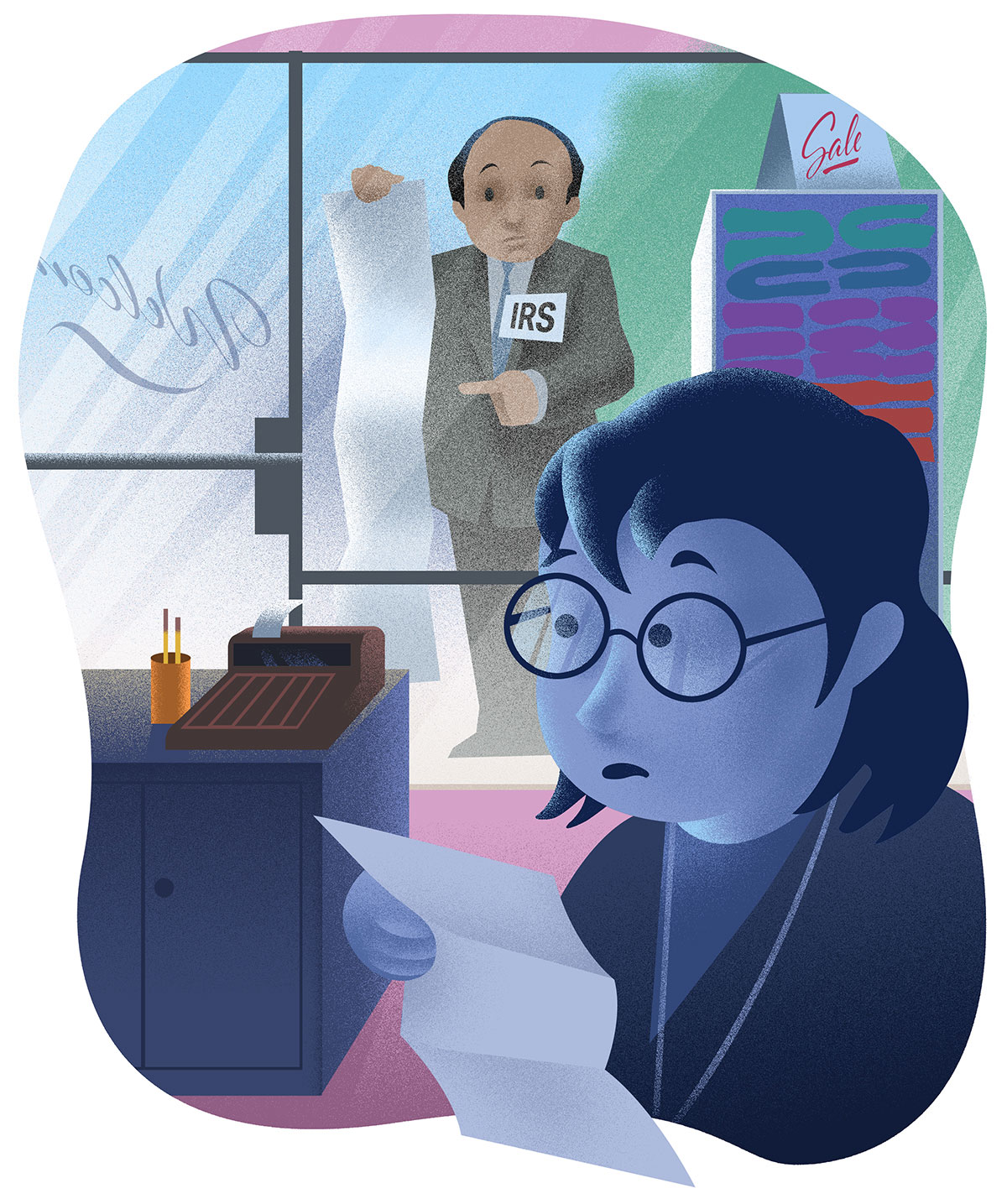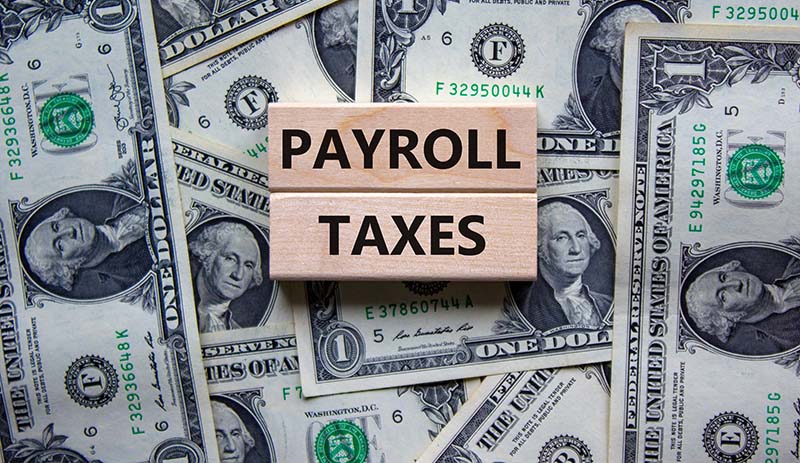Help! My business owes back payroll taxes to the IRS!
April, 15 2021 by Jean Lee Scherkey, EA
A hole-in-one makes a golfer’s day. Getting free donut holes along with a maple-glazed cruller (no judgments about maple glaze, please) from the local twenty-four-hour donut shop at 2:00 AM can’t be beaten. But being in the hole with the IRS for back payroll taxes can make you want to crawl into a black hole and disappear. The IRS takes payroll tax delinquency seriously – so seriously that IRS Revenue Officers have closed down businesses for not paying them.
Generally, payroll taxes include amounts withheld for Social Security, Medicare (together known as FICA taxes, which stands for Federal Insurance Contributions Act), and federal and state income tax withholdings. It may also include any other state or federal taxes employees may be required to remit to the government. Employers are required to pay half of the employee’s Social Security and Medicare taxes, while employees are required to pay the other half of these taxes out of their gross wages. The one-half portion of Social Security and Medicare taxes an employer pays is considered an employee benefit.
In addition to half of the Social Security and Medicare taxes, employees are required to withhold federal and state income taxes from their gross wages. The United States has a “pay as you go” tax system, meaning that taxes are generally paid as income is earned or received. As such, employers are required to withhold federal and state income taxes on behalf of their employees and remit the withholdings regularly. The frequency of the deposits will depend on the total amount of taxes remitted. (For more information on how the IRS determines when payroll taxes must be deposited, please review IRS Publication 15, (Circular E), Employer’s Tax Guide.)
Payroll taxes that consist of the employee’s portion of Social Security, Medicare, and income tax withholding are referred to collectively as the trust fund portion of the total payroll liability. It gets this name because employers are entrusted to collect and deposit these taxes on behalf of the employee. As such, it is one of the primary reasons the IRS is particularly aggressive when payroll taxes are not properly withheld and deposited. In the eyes of the IRS, failure to remit trust fund taxes is viewed as stealing from the employee.
 Payroll Deposit Penalty
Payroll Deposit Penalty
In most cases, the IRS will impose a Deposit Penalty whenever payroll taxes are remitted late or not at all. These penalties will also apply if only a portion of the payroll taxes due is deposited, even if the partial deposit was completed timely. The severity of the penalty will depend on several factors. (This is where the benefit of an experienced tax professional may make a difference.) There are some specific situations where the IRS will waive the deposit penalty for submitting payroll taxes late. For example, the IRS may waive the deposit penalty if the reason for the late deposit was due to reasonable cause and not willful neglect.
The deposit penalty increases the longer the payroll taxes remain undeposited. The penalty starts at 2% if the deposit is between one and five days late. When the deposit is between six and fifteen days late, the penalty increases to 5%. Once an employer receives their first notice regarding the missing deposits, the employer has ten days from the date on the letter to submit the total amount due, and a maximum 10% penalty may apply. After ten days, the penalty increases to 15%.
Trust Fund Recovery Penalty
Another tool in the IRS’ compliance arsenal is far more potent than the deposit penalty, which is the Trust Fund Recovery Penalty (TFRP). The IRS has three years from the date the payroll return was filed to assess a TFRP. If the IRS determines the employer willfully failed to withhold and remit the employee’s share of taxes, the IRS will impose a trust fund recovery penalty equal to 100% of the employee’s share of taxes. Known to shiver the timbers of even the most hardened honcho, the IRS may also assess the employer a criminal fine of up to $10,000 and even provide an all-expense-paid trip to the big house for up to five years.
The IRS will attempt to collect the penalty from the business or any responsible persons, such as the employer or employees responsible for the collection and deposit of the taxes to the government. All responsible persons are jointly and separately liable for the penalty. In other words, any person that is responsible for paying the taxes can be made responsible for paying this penalty, not just the employer or the business entity. The IRS takes the position that their determination of who is considered a responsible person is correct. Therefore, someone who is considered a responsible person by the IRS will need to prove otherwise. Even if the employer hires a payroll company or an accountant to process payroll and then remit the withholdings, the responsibility to ensure the federal and state government agencies receive the taxes rests on the employer. In the case of sole proprietorships (those who report their business income and expenses on IRS Schedule C), the spouse of a sole proprietor may be held liable if the IRS concludes the spouse is considered a responsible person and had the access and means to process payroll. One spouse will often help the other spouse who owns the business with the bookkeeping, paying the bills, signing checks, and processing payroll. A spouse may be considered a responsible person for trust fund recovery penalty purposes by engaging in these functions.
To be assessed a trust fund recovery penalty, the responsible person’s failure to collect or remit the trust fund portion of the payroll taxes must have been willful. A willful person knows what they are doing is wrong, but they do it anyway and act recklessly. However, keep in mind that the IRS’s definition of doing wrong and acting recklessly may not be your interpretation, so you want to be sure you understand the IRS’s point of view. For example, the IRS considers paying other creditors (such as office rent, internet and phone provider, and business credit card bills) instead of remitting trust fund taxes as willful. In fact, it is a matter of law that it is considered willful. The IRS also regards knowingly and intentionally failing to pay the taxes as willful. As you have probably determined, a person’s intent does not have to defraud the government to be considered willful. It is good to know that the IRS still knows we are all human, and making a bona fide mistake does not equal willful intent.
Once the IRS has determined that there is cause to impose a trust fund recovery penalty, the IRS will notify each responsible person by mail. The responsible person will receive IRS Letter 1153, a preliminary notice that allows the recipient to protest the proposed assessment. When the responsible person receives this letter, the IRS has not imposed the trust fund recovery penalty. It is only being proposed or pending. The recipient will have sixty days to file a protest. If the recipient is out of the country, they have seventy-five days to respond by filing a protest. But, if the IRS has reason to believe that collecting the trust fund recovery penalty is in jeopardy (they will be unable to collect the money), the IRS will attempt to collect the penalty immediately.
If the IRS is imposing the trust fund recovery penalty for more than one payroll quarter, the responsible person only needs to file one Appeals protest, which will cover all of the payroll periods in question. For quarterly payroll proposed assessments of $25,000 or less, the responsible person may make a small case request. However, if the proposed amount is more than $25,000 for any quarter, a formal written Appeals protest must be submitted. Whether filing a small case or formal Appeals request, it must include the following:
- A copy of the proposed assessment
- A written statement requesting an Appeals conference
- The tax periods involved
- A list of what is being contested
- A statement of fact explaining why the recipient disagrees with the proposed assessment of the trust fund recovery penalty. The statement should provide details and specific facts that support their position. It should also include a list of the recipient’s duties and responsibilities during the tax periods, particularly if they had any authority or duty to collect, account for, or pay the trust fund taxes. Again, if contesting the IRS’ calculation of the penalty, the taxpayer should provide documentation proving the calculations are incorrect.
- An explanation of any law or other supporting authorities that bolsters the taxpayer’s position
- The protest must be signed under penalties of perjury that the statement of facts is true.
If the responsible person misses the deadline to protest the proposed assessment or if IRS Appeals determines the trust fund recovery penalty should stand, then the penalty will become assessed. The IRS can begin collection actions, including levying the responsible person’s bank account or garnishing their wages.
Claim for Refund
Once the trust fund recovery penalty is assessed, the IRS has ten years from the assessment date to collect the penalty. You may want to hold off adding that tear welling in the corner of your eye to your beer because all is not lost. The responsible person may request a claim for refund by submitting IRS Form 843, Claim for Refund and Request for Abatement. Before filing Form 843, the responsible person must pay the delinquent payroll taxes due for one employee for each quarter that is at issue. If the IRS rejects the claim for refund, the taxpayer may then sue the IRS in district court.
Designated Payments
As soon as a person becomes aware that they have been assessed a trust fund recovery penalty, the goal is to resolve the trust fund portion of the payroll liability first. If the responsible person is financially able, voluntarily submitting even a partial payment for the delinquent taxes can help negotiate a final settlement with the IRS. However, you will want to direct or request the IRS allocate the payment towards the trust fund portion of the payroll liability first. Generally, when receiving payment for payroll taxes, the IRS will apply the payment to the most recent payroll tax due within the quarter. This is not advantageous if the responsible person has been assessed a trust fund recovery penalty for payroll taxes due two quarters prior. To designate a voluntary payment, the responsible person includes a letter with their payment that instructs the payment to be applied to the trust fund tax only. Generally, designating payments to the IRS may be done on voluntary payments only.
Assigning voluntary payments to cover the trust fund taxes can be useful when a person is caught short and cannot currently pay all of the current payroll taxes due. If an employer does not have the funds to timely pay a current payroll liability in full, it can be in the employer’s favor to designate the partial payment to the trust fund tax only. Although the employer may still owe payroll taxes, they will hopefully not owe the trust fund portion and be saved from being assessed for the trust fund recovery penalty. Though, don’t get ahead of yourself. When making designated trust fund tax payments, be sure the payment is made on the due date and not before. The IRS cannot apply payments to payroll taxes that have not been first assessed.
When resolving a payroll tax liability, knowledge of the tax law and strategy is key to limiting the severity of assessed penalties and interest. If all of this sounds too overwhelming and you’ve decided your time would be better spent searching Pinterest for tips on how to decorate the black hole you are moving into, stop. Come out of the darkness of despair and into the light of hope. TaxAudit’s Tax Debt Relief Assistance is here to help. Our staff has decades of combined experience and the determination to resolve your tax debt issues in the most beneficial manner possible.
TaxAudit’s Director of Tax Services, Arnold van Dyk, Esq., created an informational video regarding payroll tax liabilities that can be seen here:
Take a step towards resolving your delinquent payroll tax liabilities by contacting us today!





